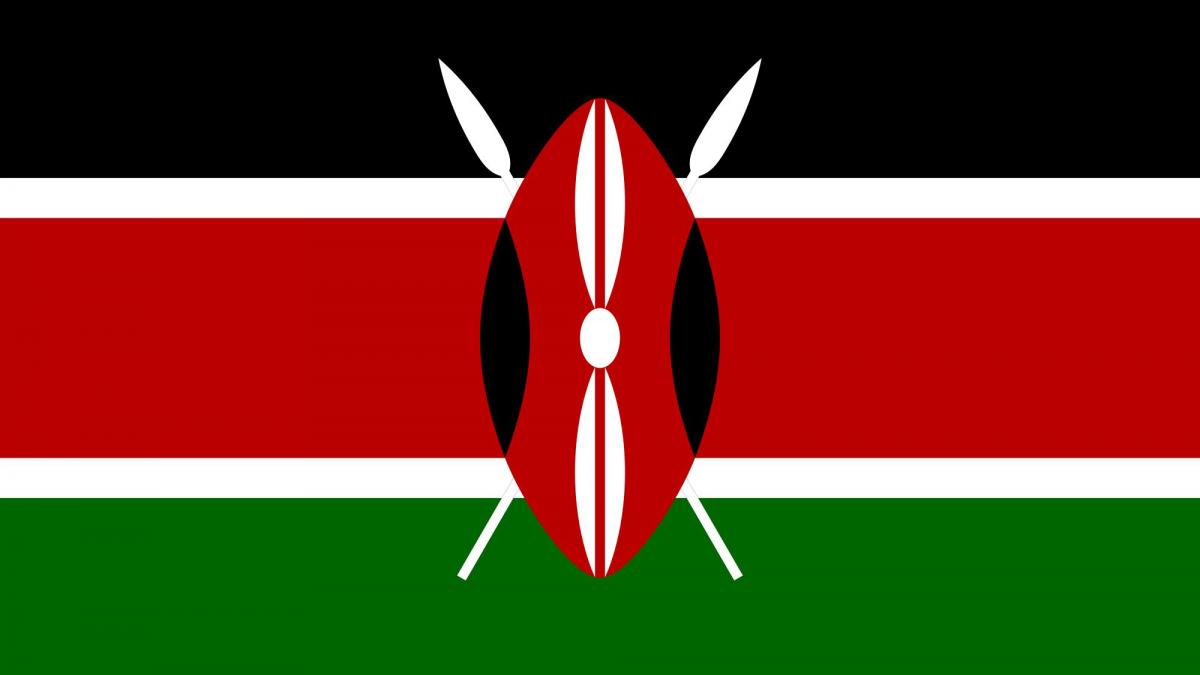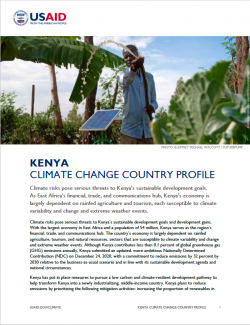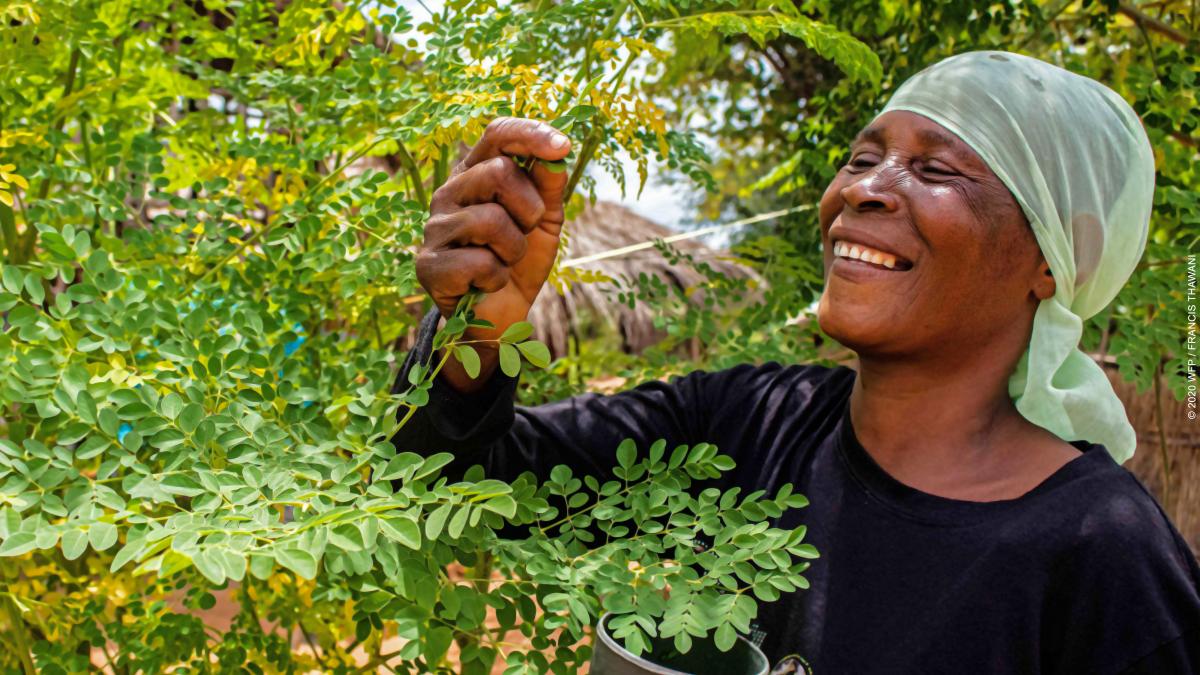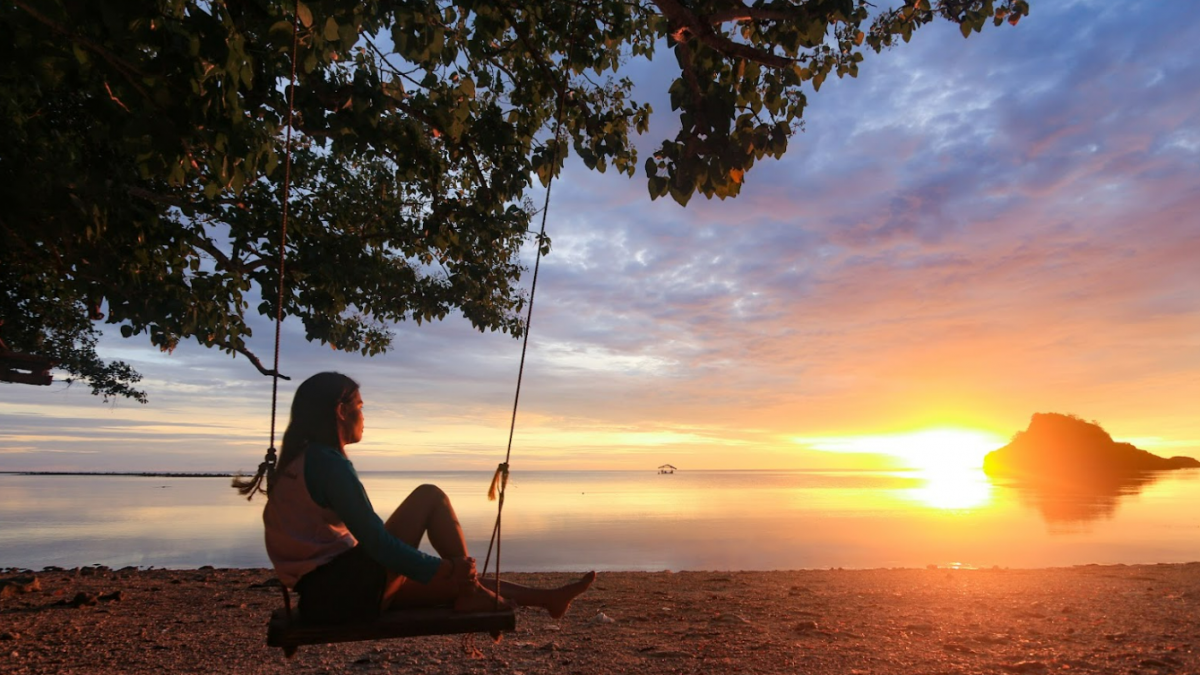Climate risks pose serious threats to Kenya’s sustainable development goals and development gains. With the largest economy in East Africa and a population of 54 million, Kenya serves as the region’s financial, trade, and communications hub. The country’s economy is largely dependent on rainfed agriculture, tourism, and natural resources, sectors that are susceptible to climate variability and change and extreme weather events. Although Kenya contributes less than 0.1 percent of global greenhouse gas (GHG) emissions annually, Kenya submitted an updated, more ambitious Nationally Determined Contribution (NDC) on December 24, 2020, with a commitment to reduce emissions by 32 percent by 2030 relative to the business-as-usual scenario and in line with its sustainable development agenda and national circumstances.
Kenya has put in place measures to pursue a low carbon and climate-resilient development pathway to help transform Kenya into a newly industrializing, middle-income country. Kenya plans to reduce emissions by prioritizing the following mitigation activities: increasing the proportion of renewables in the electricity generation mix of the national grid to 100 percent by 2030, promoting energy and resources efficiency across all sectors, climate smart agriculture, and sustainable waste management systems. The country’s priority adaptation actions include enhancing adaptive capacity and climate resilience across sectors and National and County governments, financing locally led climate action for climate resilient livelihoods, and enhancing the generation and use of climate information. These priority activities necessitate an increased demand for climate finance. The estimated total cost of implementing mitigation and adaptation actions of the updated NDC is USD $62 billion.
According to the March 2021 Climate Policy Initiative article “The Landscape of Climate Finance in Kenya,” in 2018, Kenya received $2.4 billion of public and private capital invested in climate-related activities; a mere third of the annual amount needed to meet its NDC targets and a gap that underscores the urgency of mobilizing public and private finance.
Government of Kenya Climate Priorities
Kenya is a leader in addressing climate change and was one of the first countries in Africa to enact a comprehensive law and policy to guide national and subnational climate action. The Climate Change Policy 2016, Climate Change Act 2016 and the Climate Change Amendment Act 2023, the National Climate Change Action Plan III 2023-2027, and the long term Low Emissions Development Strategy 2022-2050 guide low-carbon and climate resilient development in Kenya. Kenya’s priorities as articulated through these, and other, instruments include: adaptation, reducing emissions from deforestation and forest degradation, afforestation and reforestation, landscape restoration, climate-smart agriculture, geothermal and clean energy development, energy efficiency, and drought and flood risk management.
USAID’S Climate Change Program: Objectives and Results
USAID supports the Government of Kenya’s (GOK) development and climate priorities through programs and partnerships addressing climate adaptation and resilience building, renewable energy, and natural climate solutions. USAID has also supported the development of key GOK policy documents, including the Low Emissions Development Strategy 2022-2050, Climate Change Framework Policy, the Climate Change Act, and the Climate Change Finance Policy. Further, USAID, in partnership with Swedish Development Cooperation Agency (SIDA), supported development of Kenya’s Carbon Markets Activation Plan 2023, a framework that helps ensure transparency, equity and integrity for the carbon projects in Kenya.
Adaptation
USAID supports Kenya in building its capacity to assess vulnerability in key sectors, protect key watersheds, adapt dryland livestock and wildlife management, promote climate smart agriculture and drought tolerant crops, and improve early warning and action systems. USAID works with the GOK National Drought Management Authority, other ministries, county governments, and conservancy associations to strengthen the resilience of vulnerable communities in Kenya’s arid and semi-arid lands. USAID also supports civil society to engage with government institutions to develop inclusive policy and legislation that supports climate resilience.
Key Results
- Leveraged $8.1 billion invested by the GOK to implement the Ending Drought Emergencies framework (2012-2020) in a multi-sectoral and integrated approach.
- Supporting community conservancies to conserve wildlife and protect rangelands through the Northern Kenya Carbon Project, the world’s first large-scale grasslands soil carbon project that targets the removal and storage of 50 million tons of CO2 over 30 years and uses the revenue generated to fund adaptation and conservation activities. The project verified 3.2 million credits between 2013 and 2016. Over one million verified credits have already been sold. Revenue from these sales have been invested in community projects including schools, community tourism facilities, education bursaries, and water points that benefit both wildlife and communities.
Renewable Energy
Through Power Africa, USAID supports the development of renewable power generation projects through technical assistance, transaction advisory services, and the creation of supportive frameworks to ensure 100 percent penetration of clean energy in Kenya by 2030. Increased geothermal, wind, and solar power generation will reduce GHG emissions by replacing fossil-fuel based power generation. USAID also supports decentralized power systems such as mini-grids and solar home systems that provide renewable electricity to populations living outside the grid.
Key Results
To date, Power Africa has supported the development and commissioning of 691 megawatts (MW) of clean power generation in Kenya, including the 310 MW Lake Turkana Wind Power project, the 158 MW Olkaria V Geothermal Power Plant, the 83 MW Olkaria I Unit 6 Geothermal Power Plant, the 100 MW Kipeto Wind Power Project, and the 40 MW Malindi Solar Photovoltaic Power Project.
Natural Climate Solutions
USAID has helped Kenya improve protection of key forested watersheds and strengthen rangeland management in community conservancies. USAID works alongside the private sector, local governments, and indigenous communities that rely on these natural resources to help ensure sustained investment and viability beyond donor funding. USAID continues to explore opportunities in climate finance, a growing area of interest for donors, the private sector, and the Kenyan government.
Key Results
- Facilitate private finance and investment for working capital needs of smallholder farmers and micro, small, and medium-sized enterprises that are integrating climate-smart solutions into their business models.
- Developed an ecosystem services valuation of three key watersheds that was used to revise the national budgeting database and increase the GOK’s budget to support watershed conservation.
- Development and implementation of ward development plans that foster community engagement in planning and budgeting and facilitates sustainable rangeland management.
- Development of forest management plans that have enabled community forest associations to mobilize and leverage resources from both private and public sources for joint management of forests.
For More Information




